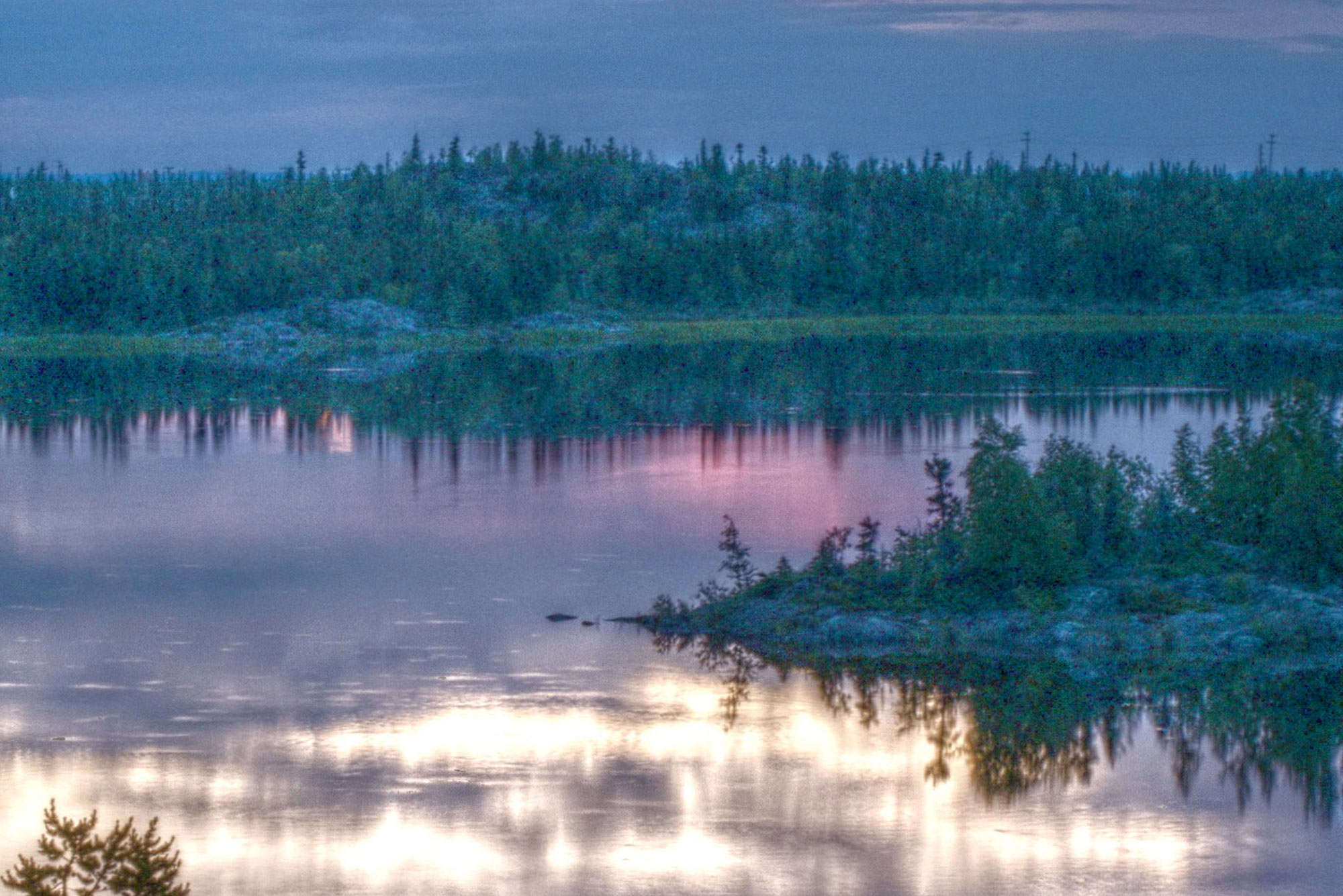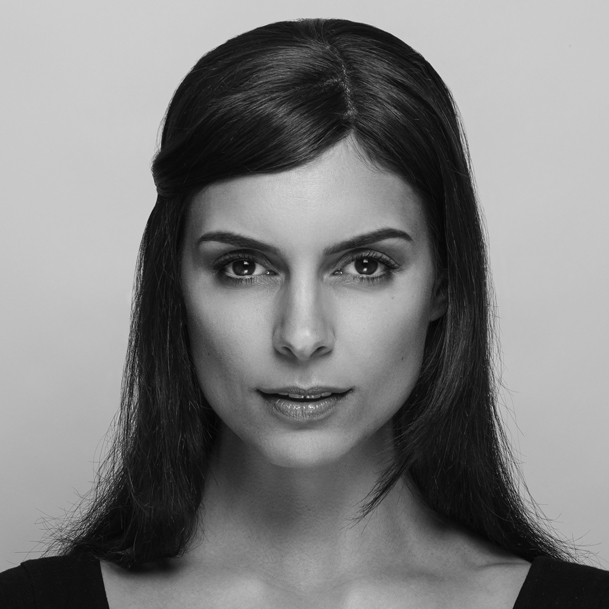Theatre on the Lake
Imagine glass-like waters that harbour a stage, with a simple set, under the big blue sky that holds the only stage light needed: the midnight sun. This was what every night looked like at Yellowknife’s first outdoor theatre festival, Theatre on the Lake.
Only three months earlier, when the lake was frozen over and two creative people were coming out of hibernation, the festival was just an idea.
Those two people were me and Chris Gamble, my partner at the time, a born-and-raised Yellowknifer. We met at theatre school and moved north after graduation. Chris had been back almost a year when I caught up with him in February during a “cold spell.” It was the time of year when -56° Celsius temperatures and five hours of daylight was normal. It was a shock, but it provided the perfect incubator for making summer plans.
There is an opportunist vibration north of 60, where there’s a sense that creative projects can really take off. There’s less competition than in the larger cities in the south, and the Yellowknife community has a high level of involvement. So when we realized there was no summer theatre planned for that year, it was an easy decision to create it ourselves.
There’s a thriving theatre community during the winter months, when it makes sense to stay indoors. But Yellowknife summers are spent outside, when the cold northern winds take a hike and the sun lights up long and hot days of activity. Those weeks are fleeting but glorious, and there’s no shortage of kayaking, water skiing, canoeing, hiking, portaging, and camping to keep people busy. Throw in an amazing music festival called Folk on the Rocks and, suddenly, the whole summer is filled up.
Past summers in Yellowknife only rarely had outdoor theatrical events. So Chris and I brainstormed an idea that could compete with all the summer activities: put a theatre outside, on a lake. Our outdoorsy audience members could watch from the shore or paddle up to it in boats. Nature would be the backdrop. Audiences could bring their own picnics. Local actors could get involved, and everyone would get to be outside. It had never been done before.

The Prince of Wales Heritage Museum, nestled on the shore of Frame Lake, in the middle of town, had the perfect back space with wide-tiered steps that connected the building to the lake and acted as a canoe portal for coming and going guests. Why not seat the audience there and build the stage on the water out in front of it?
At first we considered putting the stage on a pontoon and making a kind of raft, like how the local houseboats are constructed. But we didn’t want the actors to be jostled around and get “seasick” from the natural dynamics of the lake. And, although an anchor could keep the stage in place, it might still drift. We also considered a stage on stilts in the water, but that brought the possibility of actors dropping over the edge into the lake—rarely a consideration in stage design.
We felt victorious when we finally figured it out: We would keep the stage low and steady. We spent a long time reinforcing the foundation and covered the top of it with plywood sheets to create a sturdy platform. We finally had something that was guaranteed to not collapse. Or sink. Or blow away. Alongside many volunteers, Chris and I armed ourselves with battery-operated drills and vats of insect repellent. We put on wading pants to protect us from the leeches and built a stage in a lake in only three days.
Our biggest expense was the materials required to build the stage. So we took a trip to the Yellowknife dump to do some scavenging. Something about the transient personality of the city lends to many random items being discarded, and the dump is a gold mine of useable items like toasters, televisions, clothing, toys, tires, and, thankfully, wood scraps. In our search, we also came across items to use as set pieces and costumes to add to the finer details for our masterpiece stage.
We carefully considered the selection of plays for the festival in order to attract the most amount of people. We searched for comedic plays that would make audience members laugh and enjoy themselves so that they would (hopefully) tell all their friends about the great time they had at the show. We also wanted to cater to all ages, and the right kind of funny has a way of doing that. If the plays were short, only fifteen to twenty minutes, we could cast more actors. And with every actor came at least ten friends and family members who would attend the festival to support them. If we wanted the festival to succeed, we needed to grab and nurture the attention of as many people that we could.
We put a call out to local writers to submit their own works, but no one answered. So we had to make do. Chris had two plays in the works that he finished up and made actor-ready, and we threw in a segment from a David Mamet play called Squirrels because it was funny, it took place outside, and it was easy for us to stage. Our casting call-out was much more successful. We welcomed whoever wanted to participate and gathered an enthusiastic and eclectic group of amateur actors, students, freelancers, and government workers who just wanted to give acting a try.
Rehearsals took place in borrowed office spaces that were donated in kind from keen supporters. We rehearsed for about a month, managing the various scheduling restrictions each actor had. My respect for stage managers grew exponentially as I attempted to make everyone’s schedule work.
As opening drew nearer my anxiety grew bigger. It was important to us that we make a positive impression on the community so that there would be interest to continue something like this the following year. I had a long list of worries: Would enough people come? Would our plays be entertaining enough? Would our less experienced actors drop out at the last minute because of nerves? And, even with Yellowknife’s astonishingly dry climate in the summer, what if…?
But one by one, each concern had a way of working itself out. To increase the opportunity for our audience, we planned both midday and evening shows. Office workers in the downtown core could enjoy a picnic and watch some theatre during their lunchtime. The evening shows would cater to families, when parents were done work and could take their kids out. We took a break on the weekend of Folk on the Rocks so that we did not have to compete with a more established festival. The museum offered us their group meeting room as security against the unlikely event of rain. The pieces were falling into place.
Opening came surprisingly quickly. We filled the four lunch-hour shows with about thirty-five people at each performance. Even more people came to our five evening shows, and by closing night we had sixty-five people gathered on the steps of the museum—the maximum capacity under safety regulations. It was a thrill to see audience members come back, just for the fun of it. And it was incredibly satisfying to see that kids wanted to spend their summer vacation watching plays. Several people asked if they could be involved with the following year’s festival, and we were well-served for volunteers the next summer, and for the three summers after that.
It’s been seven years since I left Yellowknife, and my experience there gave me a larger scope for understanding how essential theatre is. I have great pride and gratitude to have affected the cultural landscape in a positive way in such a remote and unique place. Theatre on the Lake was also the catalyst that launched me to pursue a professional acting career. I had held back from taking a thorough theatre conservatory training program for many years because of my own fear of the career uncertainty I would be risking. But by the time the second year of the festival had ended, I was enrolled at George Brown Theatre School. I was reassured that the festival was in good hands to continue without my being there, and I moved permanently back down south.
The leap was worth it, and now I’m part of a rich community of actors and artists in Toronto. I know how important it is to nurture new works, audiences, and relationships between artists. I strive to do this with indie theatre and with my own theatre collective, Theatre Inamorata. My time in Yellowknife proved to me that a shared theatre experience with good stories could captivate anyone and happen anywhere, whether it’s in a dark theatre, or even on a lake.









Comments